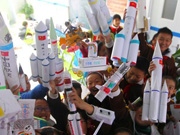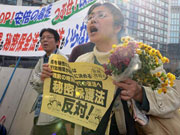Changes could balance gender ratio
Demographics in three areas where the rural two-child policy has been tested indicate that allowing couples to have two children could result in an increased fertility rate and a more balanced gender ratio.
In addition to Yicheng in Shanxi province, trials have been carried out in Jiuquan, Gansu province; Chengde, Hebei province; and Enshi Tujia and Miao autonomous prefecture in Hubei province, with rural couples able to have a second child since the 1980s.
Despite the implementation of the policy, the population growth rates of Chengde and Enshi were lower than national census figures between 2000 and 2010.
The number of residents in Chengde grew by 3.42 percent over that period, lower than the national growth rate of 5.84 percent.
In Enshi, the population decreased by 12 percent, as a result of the outflow of migrant workers, a study by demographer Yi Fuxian showed.
The population of Jiuquan, which implemented the policy in 1984, grew higher than the national average to 11.8 percent between 2000 and 2010, as the city's sixth population census showed.
According to Yi's study, the two-child policy in those areas improved the fertility rate, which measures the average number of children a woman gives birth to in her lifetime.
"In 2000 the rate in Chengde was 1.36, higher than the 1.29 for Hebei. In Enshi, the figure in 2000 was 1.36, higher than the 1.01 for Hubei," he told Caixin Magazine.
His study also found the policy was able to significantly balance the gender ratio.
In 2010, the ratio for children aged 1 to 4 was 110 boys for every 100 girls in Enshi, lower than that of Hubei province for that year, which was 124 boys for every 100 girls.
The ratio for ages 1 to 4 in Chengde and Jiuquan in 2010 — 114 boys for every 100 girls — was also significantly lower than that of provincial areas, Yi said.
One of the major problems brought about by the one-child policy is the imbalance of sex ratio at birth, as the 2010 national census showed China has a 118 boys born to every 100 girls.
However, Yi warned that the two-child policy could not provide a fundamental solution to the imbalance in sex ratio even though the chances of selective abortion would be reduced greatly.
"If couples were only allowed to have one child, half of all families would give birth to boys. If they were allowed to have two, three quarters of families would get at least one boy," he said. "There would be much less motivation for selective abortion.
"Compared with the one-child policy, allowing couples to have two children would reduce the sex ratio at birth. However, there is still the problem of an imbalance in sex ratio, as the experiment indicated."
— XU WEi
 |

 Rime scenery in Mount Huangshan
Rime scenery in Mount Huangshan 'Jin' named the word of the year by cross-strait netizens
'Jin' named the word of the year by cross-strait netizens PLA elite units unveiled
PLA elite units unveiled  Chinese scientific expedition goes to build new Antarctica station
Chinese scientific expedition goes to build new Antarctica station Record of Chinese expressions in 2013
Record of Chinese expressions in 2013 Chinese naval escort fleet conducts replenishment in Indian Ocean
Chinese naval escort fleet conducts replenishment in Indian Ocean Weekly Sports Photos
Weekly Sports Photos 17th joint patrol of Mekong River to start
17th joint patrol of Mekong River to start Spring City Kunming witnesses snowfall
Spring City Kunming witnesses snowfall China's moon rover, lander photograph each other
China's moon rover, lander photograph each other Beijing tenants
Beijing tenants  China's aircraft carrier carrys out 1st docking manoeuver in Sanya
China's aircraft carrier carrys out 1st docking manoeuver in Sanya Japanese stage protest against secrecy bill
Japanese stage protest against secrecy bill
Day|Week|Month